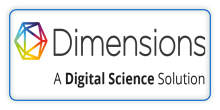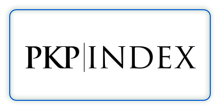FUSION INDUCED BY ENERGY-INTENSIVE MULTIFUNCTION CAVITATION IN CONJUNCTION WITH POSITRON IRRADIATION
DOI:
https://doi.org/10.29121/ijoest.v7.i3.2023.520Keywords:
Cavitation Fusion, Multifunction Cavitation, Positron IrradiationAbstract
This review summarizes the development of multifunction cavitation technology and assesses future applications for this process. The focus is on attempts to increase the surface strength and functionality of various metals and plastics and to elucidate the conditions that can induce nuclear fusion by cavitation. An experimental setup capable of producing cavitation fusion based on positron-irradiated laser-assisted high-field energy-intensive functional cavitation is described, having the same basic structure as a prior device without positron irradiation. A combination of water jet, ultrasonic and magnetic field energy sources has been found to increase the sonoluminescence intensity and to theoretically exceed the threshold required for the D-T fusion reaction. This paper describes the incorporation of positron and laser energy sources to this system as a means of further increasing the internal temperature and pressure values of bubbles. Specifically, a Na-22 positron beam source was placed in the upper part of the reaction vessel in the direction of the magnetic field such that positrons were imparted to cavitation bubbles floating on the surface of degassed heavy acetone. These positrons were partially annihilated by interactions with electrons via the Compton effect to generate gamma-rays and energy via the reaction e+ + e- → 2γ + l.02 MeV. This energy promoted the D-T chain reaction D + T → 4He + n + 14 MeV to increase the probability of cavitation fusion.
Downloads
References
Asoka-Kumar, P., Lynn, K. G., & Welch, D. O. (1994) Characterization of Defects in Si and SiO2−Si Using Positrons. Journal of Applied Physics, 76(9), 4935–4982. https://doi.org/10.1063/1.357207
Brandt, W., & Dupasquir, A. (Eds.). (1983). Positron Solid-State Physics. In Proceedings of the International School of Physics “Enrico Fermi”. North-Holland Publishing Company. https://ci.nii.ac.jp/naid/10011981452/
Dupasquier, A., & Mills, A.. P. Jr. (1995). Positron Spectroscopy of Solid. IOS Press. https://books.google.com/books?hl=en&lr=&id=gfnAAQAAQBAJ&oi=fnd&pg=PR3&dq=Dupasquier,+A.,+%26+Mills,+A..+P.+Jr.+(1995).+Positron+Spectroscopy+of+Solid.+IOS+Press.&ots=HR18ZfMlWz&sig=JLHvdql7PBT7EF2QPeJDCsNfUOY
Ijiri, M., Ogi, T., Murakami, K., Horiguchi, S., & Yoshimura, T. (2022a). Effect of Multifunction Cavitation Treated Carbon Steel Surface on Fracture Toughness. Journal of Materials Research and Technology, 19, 3546–3553. https://doi.org/10.1016/j.jmrt.2022.06.117
Ijiri, M., Okamoto, N., Okamoto, S., Ogi, T., Kikuchi, S., & Yoshimura, T. (2022b). Characteristics of Oxide Film Formed on Cavitation-Treated Steel Surface in Water. Journal of Materials Research and Technology, 19, 1897–1905. https://doi.org/10.1016/j.jmrt.2022.05.182
Ijiri, M., Yamaguchi, K., Kikuchi, S., Fujiwara, M., Nakanishi, Y., & Yoshimura, T. (2021a). Improvement in the Quality of the Processed Material Surfaces Lies in the Moving of Nozzle in the Cavitation Processing. Surfaces and Interfaces, 25, (101206). https://doi.org/10.1016/j.surfin.2021.101206
ljiri M, Kato, F., Maeda, D., Shimonishi, D., & Yoshimura, T. (2021b). Effect of Compressive Residual Stress on Film Formed by Mechanochemical Multifunction Cavitation Processing. ljiri M. Materials Science Forum, 1016, 574–579. https://doi.org/10.4028/www.scientific.net/MSF.1016.574
Ijiri, M., Yamaguchi, K., Kikuchi, S., Kato, F., Kunieda, Y., Sakurai, H., Ogi, T., & Yoshimura, T. (2021c). Formation of a Phosphoric Acid Compound Film on an AZ31 Magnesium Alloy Surface Using Cavitation Bubbles. Surfaces and Interfaces, 25, 101194. https://doi.org/10.1016/j.surfin.2021.101194
Ijiri, M., Shimonishi, D., Tani, S., Okada, N., Yamamoto, M., Nakagawa, D., Tanaka, K., & Yoshimura, T. (2019). Improvement of Corrosion Resistance of Magnesium Alloy by High-Temperature High-Pressure Cavitation Treatment. International Journal of Lightweight Materials and Manufacture, 2(3), 255–260. https://doi.org/10.1016/j.ijlmm.2019.02.001
Ishii, A. (1993). Positrons at metallic surfaces. Trans. Tech. Pub, Aedermannsdorf.
Saitou, N., Enomoto, K., Kurosawa, K., Morinaka, R., Hayashi, E., Ishikawa, T., & Yoshimura, T. (2003). Development of Water Jet Peening Technique for Reactor Internal Components of Nuclear Power Plant. J. Jet. Flow Eng., 20, 4–12.
Okido, S., Yoshimura, T., Enomoto, K., Saito, H., Morinaka, R., & Ishikawa, T. (2002). Preventive effect of shot peening on stress corrosion cracking. Materials Science Research International, 8(4), 193–198. https://doi.org/10.2472/jsms.51.12Appendix_193
Puska, M. J., & Mieminen, R. M. (1994). Theory of Positrons in Solids and on Solid Surfaces. Reviews of Modern Physics, 66, 841–897. https://doi.org/10.1103/RevModPhys.66.841
Seife, C. (2002). Bubble Fusion Paper Generates A Tempest in a Beaker. Science, 295(5561), 1808–1809. https://doi.org/10.1126/science.295.5561.1808
Schultz, P. J., & Lynn, K. G. (1988). Interaction of Positron Beams with Surfaces thin Films, and Interfaces. Reviews of Modern Physics, 60(3), 701–779. https://doi.org/10.1103/RevModPhys.60.701
Taleyarkhan, R. P., West, C. D., Cho, J. S., Lahey, R. T., Nigmatulin, R. I., & Block, R. C. (2002). Evidence for Nuclear Emissions During Acoustic Cavitation. Science, 295(5561), 1868–1873. https://doi.org/10.1126/science.1067589
Yoshimura, T. (2023a). Cavitation Fusion by Energy-Intensive Multifunction Cavitation in a Strong Magnetic Field with Laser Light Excitation. International Journal of Engineering Science Technologies, 7(2), 50–54. https://doi.org/10.29121/ijoest.v7.i2.2023.492
Yoshimura, T., Noda, T., & Ijiri, M. (2023b). Processing of magnesium alloy by energy-intensive multifunction cavitation in a strong magnetic field with laser light excitation and associated sonoluminescence. Results in Materials, 18, 100391: 1-11. https://doi.org/10.1016/j.rinma.2023.100391
Yoshimura, T., Fujinaga, S., & Ijiri, M. (2022a). Modifying Resin Viscoelasticity by Multifunction Cavitation Processing in a Magnetic Field. International Journal of Engineering Science Technologies, 6(4), 1–10. https://doi.org/10.29121/ijoest.v6.i4.2022.364
Yoshimura, T., Watanabe, S., Ijiri, M., & Ota, S. (2022b). Development of Processing Technology Using Extremely High Concentration Cavitation Energy by Strong Magnetic Field. Results in Materials, 14, 100289. https://doi.org/10.1016/j.rinma.2022.100289
Yoshimura, T., Ijiri, M., & Sato, K. (2021a). Estimation of Nuclear Fusion Requirements in Bubbles During Ultrahigh-Pressure, Ultrahigh-Temperature Cavitation Promoted by Magnetic Field. International Journal of Engineering Science Technologies, 5(6): 102-115, i6.2021.257. https://doi.org/10.29121/IJOEST.v5
Yoshimura, T., Sugae, Y., Ogi, T., Kato, F., & Ijiri, M. (2021b). Development of Energy Intensive Multifunction Cavitation Technology and its Application to the Surface Modification of the Ni Based Columnar Crystal Superalloy CM18 6LC. Heliyon, 7(12), e08572. https://doi.org/10.1016/j.heliyon.2021.e08572
Yoshimura, T., Nishijima, N., Hashimoto, D., & Ijiri, M. (2021c). Sonoluminescence from Ultra-high Temperature and Pressure Cavitation Produced by a Narrow Water Jet. Heliyon, 7(8), e07767. https://doi.org/10.1016/j.heliyon.2021.e07767
Yoshimura, T., Iwamoto, M., Ogi, T., Kato, F., Ijiri, M., & Kikuchi, S. (2021d). Peening Natural Aging of Aluminum Alloy By Ultra-High-Temperature And High-Pressure Cavitation. Applied Sciences, 11(7), 1–13. https://doi.org/10.3390/app11072894
Yoshimura, T., Shimonishi, D., Hashimoto, D., Nishijima, N., & Ijiri, M. (2021e). Effect of Processing Degree and Nozzle Diameter on Multifunction Cavitation. Surface Engineering and Applied Electrochemistry, 57(1), 101–106. https://doi.org/10.3103/S1068375521010154
Yoshimura, T., Kumiko, T., Ijiri, M., & Nakagawa, D. (Inventors). (2022f). Assignee: Sanyo-Onoda City Public University, Patent no. JP7157994, Date of Patent: Mar 17,2022.
Yoshimura, T. (Inventor). (March 17, 2020). Assignee: Sanyo-Onoda City public university, Patent no. US, 10(590), 966 B2, Date of Patent, Method for Generating Mechanical and Electrochemical Cavitation, Method for Changing Geometric Shape and Electrochemical Properties of Substance Surface, Method for Peeling off Rare Metal, Mechanical and Electrochemical Cavitation Generator, and Method for Generating Nuclear Fusion Reaction of Deuterium, International PCT Pub. No.: W02016/136656, Pet Care Trust. No: PCT/JP2016/055016.
Yoshimura, T., Tanaka, K., & Yoshinaga, N. (2018a). Nano-level Material Processing by Multifunction Cavitation. Nanoscience and Nanotechnology – Asia, 8, 41–54. https://doi.org/10.2174/2210681206666160922164202
Yoshimura, T., Yoshiya, H., Tanaka, K., & Ijiri, M. (2018b). Estimation of Bubble Fusion Requirements During High-Pressure, High-Temperature Cavitation. International Journal of Advancements in Technology, 09(3), 1–9 1000206. https://doi.org/10.4172/0976-4860.1000206
Yoshimura, T., Yoshiya, H., Tanaka, K., & Ijiri, M. (2018c). Estimation of Bubble Fusion Requirements During High-Pressure, Hightemperature Cavitation. The 21st International Conference for Condensed Matter Nulear Science, 3–8 June. Fort Collins, CO. https://doi.org/10.4172/0976-4860.1000206
Yoshimura, T., Kumiko, T., & Ijiri, M. (2018d). Nanolevel Surface Processing of fine Particles by Waterjet Cavitation and Multifunction Cavitation to Improve the Photocatalytic Properties of Titanium Oxide. Intech Open Access. Cavitation, ISBN: 978-1-78984-653-9. https://doi.org/10.5772/intechopen.75271
Yoshimura, T., Tanaka, K., & Yoshinaga, N. (2016a). Development of Mechanical-Electrochemical Cavitation Technology. J. Jet. Flow Eng., 32(1), 10–17.
Yoshimura, T., Tanaka, K., & Yoshinaga, N. (2016b). Material processing by Mechanical-Electrochemical Cavitation p. 2016 Water Jetting: 223-235. BHR Group.
Yoshimura, T., & Sato, K. (2014). Study on Improvements of Corrosion Resistance of Steel Using Mechanochemical Cavitation. J. Jet. Flow Eng., 30(2), 10–17.
Yoshimura, T., Waseda, K., Sato, K., & Takarayama, N. (2007). Development of Water Jet Peening in Air and Application to Fretting Fatigue. J. Jet Flow Eng., 24(1), 11–17.
Zhou, W., Chen, Z., Oshima, N., Ito, K., O’Rourke, B. E., Kuroda, R., Suzuki, R., Yanagishita, H., Tsutsui, T., Uedono, A., & Hayashizaki, N. (2012). In-situ Characterization of Free-volume Holes in Polymer thin Films Under Controlled Humidity Conditions with an Atmospheric Positron Probe Microanalyzer. Applied Physics Letters, 101(1), 014102. https://doi.org/10.1063/1.4729425
Published
How to Cite
Issue
Section
License
Copyright (c) 2023 Toshihiko Yoshimuraa

This work is licensed under a Creative Commons Attribution 4.0 International License.






























